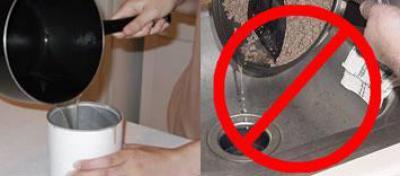FOG Best Management Practices (BMP)
- Store used fryer oil in covered containers for recycling.
- Use strainers in sink drains to prevent food solids from filling up Grease Removal Devices (GRDs) prematurely.
- Post educational signs near sinks or drains for employees to follow BMPs. The city may be able to provide materials.
- Employees have the biggest impact on the condition of your GRD, train all kitchen staff on reducing the amount of FOG to kitchen drains.
- Practice dry cleanup- scrape cookware, plates into trash rather than rinsing prior to washing.
- Reduce! Minimize the amount of Fats, Oils and Greases in food prep and cooking.
- Recycle! Oils and greases are commodities with value! Pumpers may purchase outright or give a discount on services for FOG material collected.
- Cover outdoor waste oil containers to keep rainwater out.
- Preferred Pumper Program! Don’t want to deal with a greasy, smelly mess? Call a Preferred Pumper (http://preferredpumper.org/).
- Clean up spills quickly. Spills of FOG or oil are slippery and dangerous for employees or customers. Don’t wash spills down the drain, inside or out.
- Outside the restaurant- make sure waste oil containers don’t leak. If they do, ask the rendering company for a new one that doesn’t leak. Leaks are a liability for slips & falls, and unsightly and odorous for customers.
- Exhaust fans and hoods are a source of FOG material outside of the building. Ensure these are cleaned regularly and FOG is not finding its way into a storm drain.
- Dirty mop water should always be dumped into a sink connected to the GRD, never dump mop water outside or in a storm drain.


